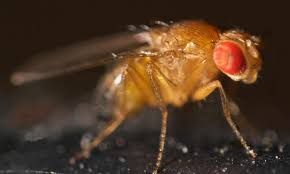



Business Inquiry
Global:
Email:marketing@medicilon.com
+1(781)535-1428(U.S.)
0044 7790 816 954 (Europe)
China:
Email: marketing@medicilon.com.cn
Tel: +86 (21) 5859-1500



Scientists who study a molecule known to play a role in certain types of cancers and neurodegenerative disorders have a powerful new tool to study this compound due to research conducted at Indiana University (IU). Their study (“Drosophila Larvae Synthesize the Putative Oncometabolite L-2-Hydroxyglutarate during Normal Developmental Growth”), published in the Proceedings of the National Academy of Sciences, shows how the extreme growth experienced by fruit flies in their earliest stage of life shares biochemical similarities with the growth of cancer cells.

“We found that the same molecule implicated in human cancers is also produced by fruit flies during their larval stage,” said senior author Jason M. Tennessen, Ph.D., an assistant professor in the Indiana IU Bloomington College of Arts and Sciences’ department of biology. “The discovery is significant because it provides the first animal model to understand how these molecules function in healthy cells. If we can determine the function of this molecule in normal cells, we can better understand how it causes human disease.”
Medicilon boasts nearly 300 tumor evaluation models. At the same time, we are empowering innovative therapies to comprehensively evaluate and study immuno-oncology. We have completed model establishment and efficacy evaluation of immuno-therapies such as CAR-T, TCR-T, CAR-NK, oncolytic virus, antibody (monoclonal antibody, double antibody, polyclonal antibody, etc.), siRNA, AAV.
Tumor Animal Model Medicilon Has Established:
Specifically, the study is the first to find that fruit flies produce L-2-hydroxyglutarate, or L-2HG, a molecule commonly regarded as an “oncometabolite,” which can promote tumor formation and growth.
L-2HG has been found in tumor cells from patients with brain and kidney cancers, as well as the rare neurological disorder L-2-hydroxyglutaric aciduria, whose symptoms include muscle weakness, seizures, and damage to the parts of the brain that control muscle movement, speech, vision, emotion, and memory. Another form of the molecule—a “mirror image” version called D-2HG—has also been found in brain tumors and leukemia.
The IU study is also the first to show how the molecule functions in a living system where cancer is not present.
“How the function of L-2GH differs between healthy and diseased tissues is poorly understood,” Dr. Tennessen said. “In addition to establishing a new model for studying this cancer-related molecule, our study demonstrates that a compound previously regarded as a metabolic waste product actually functions in healthy animals.”
The discovery of L-2HG in fruit flies was a surprise, he added. His lab had been working to create fruit flies that lacked lactate dehydrogenase, an enzyme commonly thought to fuel growth in many tumors, and therefore a potential target for cancer drug development.

After analyzing normal and mutant flies with metabolomics, Dr. Tennessen’s team was surprised to find the mutant flies stopped producing not only lactate but also L-2HG, which showed the enzyme was responsible for producing this molecule as well.
The IU researchers then examined the unmodified flies to understand the role of L-2HG in these insects. Their analysis found the flies normally produce the molecule at high levels in the larval stage, a period of extreme growth during which the body grows over 200 times in size over several days. They also identified a new mechanism that allowed the flies to control their accumulation of the molecule. The mechanism is significant since the high L-2HG levels that flies produce in early life is precisely controlled, a stark contrast to the production of this molecule in cancer and diseased cells.
“What we need to do next is conduct further research to really nail down how exactly this molecule functions in a healthy animal,” Dr. Tennessen said. “What happens if there’s too much of it, or too little? Does it accelerate growth, or slow it down? Exactly what genes does it control? There’s a lot of important questions we can answer using the power of fly genetics.”
 Relevant
news
Relevant
news